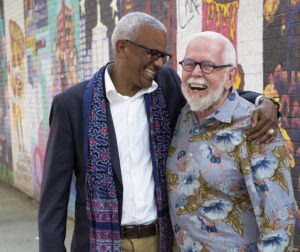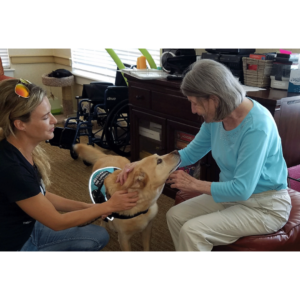How to attract volunteers to your community
The traditional relationship between volunteers and staff members at elder care communities has been a simple one: Volunteers motivated by altruism apply and then interact with residents out of the goodness of their hearts, and community staff members express gratitude for their service.
If we examine the products of this accepted wisdom, however, we most often will find volunteer programs that are lackluster in almost every way. Outside of the buildings in which I work, I have never met an administrator who is truly excited about the current state of the volunteer program in his or her building. What I hear instead is frustration that he or she cannot find any volunteers and bafflement as to the reasons behind this phenomenon and what they can do to change it.
The problem, I tell them, is not a lack of volunteers. Instead, the real problem is the aforementioned notion of volunteer/facility relations, which is governing their efforts and consistently producing disappointing results. As with anything, one must adopt a different approach to obtain different results, and for volunteer programming, doing so means re-examining three key assumptions.
Motivators for volunteering
Certainly, the selfless desire to help others is one reason people volunteer, but it is an enormous mistake to assume that this is the only reason. Consider the example of one volunteer, Jen. Some time ago, I learned that a long-standing problem existed related to the state of residents’ clothing: missing buttons, small holes, tears and items that generally were in poor condition. I began looking for someone who might volunteer his or her seamstress skills and met Jen. She was a high school senior preparing to apply to fashion school later that year. She did not have much volunteer experience to highlight on her application, but she was thrilled when she saw this opportunity to use her skills in fashion and tailoring to improve the lives of older adults.
Jen started her volunteerism by creating clothing inventories for long-term residents. When she found an item in poor condition, she mended it, if possible. If mending was not possible, then Jen transformed into a personal shopper. She would sit with the resident; ask about color, fabric and design preferences; and then select a few possibilities from the local thrift store, letting the resident make the final decision on pieces to keep and returning the items that didn’t make the cut.
For Jen’s college applications, the social services director and I wrote glowing letters of recommendation, highlighting how she had taken ownership of this pilot program and used her expertise to improve the quality of life for residents. This unique pre-professional experience no doubt helped differentiate Jen’s application from the rest, and she is finishing her first year in a fashion merchandising program, on scholarship.
Jen’s experience, and the experience of many others like her whom we have welcomed into our innovative programs, highlight the fact that volunteers want to do more than what traditionally has been asked of them. Altruism did not fuel Jen’s desire to volunteer; instead, she was motivated by the opportunity to use her specific skills in a way that would better position herself for acceptance into a competitive academic program. Serving seniors was a plus—and something she greatly enjoyed—but it was not what got her in the door.
Community value
Volunteers have specialized skills that they want to share with communities, but how can communities adequately compensate those who share their expertise? As seen in the example of Jen, references are one way. Another way is simply by providing them professional experience.
Consider that all nursing homes and rehabilitation centers consist of departments that represent professional areas slated to grow much faster than average over the next decade: nursing, social services, dietetics, physical and occupational therapy, and general health service administration. Viewed through this lens then, buildings have the opportunity to provide highly desirable professional experience to motivated volunteers, helping those volunteers gain admission to dream colleges, win competitive internships or land job interviews in this difficult economy. Buildings are not simply passive receivers of volunteer services; they also have the potential to be incredibly valuable resources.
Jacki was a reception volunteer pursuing a degree in healthcare administration. Knowing that the managerial departments are always busy, I asked Jacki whether she would be interested in volunteering in the business office. She said yes.
Over time, this relationship evolved into a formal internship between Jacki and our community, which ultimately resulted in a part-time position for her as she finishes her degree. In this mutually beneficial relationship, we offered hands-on experience to further her career prospects after graduation as well as references and numerous professional contacts in her chosen industry. In return, we have gained countless hours of specialized administrative service to the community as well as an exceptional employee. Additionally, the residents indirectly benefited from this relationship by having administrative staff members who were freed up to focus on matters that require a high level of education and expertise.
Getting volunteers, communities together
Volunteers have specialized skills that they want to offer, and communities can amply reward them through references, professional contacts and experience. The role of a volunteer coordinator, then, is to efficiently and effectively match these parties.
The recruitment, training and orientation methods on which the majority of buildings and coordinators rely, however, are relics in today’s fast-paced digital world. It is not efficient to have a stack of paper applications behind the front desk for potential volunteers who happen to wander into a building. Making occasional phone calls to nearby churches and schools to try to drum up volunteers is almost entirely ineffective; ask any activities professional, who has tried. Those methods have persisted for at least 40 years and, at best, produce only a trickle of volunteers through a building in any given year.
We can see alternatives to those traditional approaches all around us. How do most people apply to college, look for a job, keep in touch with friends, pay bills, watch movies, listen to music, make travel plans and buy things? Online. Eighty-seven percent of all Americans use the Internet regularly, and among certain groups, that amount climbs to 97 percent, according to the Pew Internet Project.
Virtually every sector of modern American life has embraced the efficiency and expanded reach that the Internet provide—except for the field of volunteer management. Realizing this, it is not surprising that traditional volunteer management approaches are failing in this digital age. The surprising fact is that so many communities still embrace an antiquated model.
A digitized volunteer management approach can yield high returns without the need to sacrifice any quality control. Instead of leaving a stack of paper applications behind the front desk, email a link to a Google form that new volunteers can complete online. Most volunteers are used to filling out applications online, and Google will plug their answers into a time- and date-stamped spreadsheet that is automatically updated each time a new volunteer applies.
Also, don’t exclusively rely on churches and schools to find volunteers. Use one of the many free online volunteer recruitment sites to advertise your volunteer opportunities: www.allforgood.org, www.volunteermatch.org and www.createthegood.org are good options.
And instead of waiting to hold group orientation sessions for new volunteers, make online orientation videos that new volunteers can view at their convenience on their personal computers or mobile devices. Making short training videos specific to each position in your facility also will ensure that when new volunteers arrive, they already are well-educated and well-trained.
Finally, follow up with new volunteers via email, text or phone to make sure they had a good experience.
Implementing this digital approach to recruitment, orientation, training and follow-up can produce a flood of new volunteers and completely revolutionize the culture of a building.
A new paradigm
For too long, volunteer programs have languished as an afterthought in most facilities, thrown onto the plate of activities professionals who are too busy with their official duties to give much thought to innovative approaches to volunteer management. The result of this neglect is an unconsciously adopted assumption that volunteer programs are not capable of having a tremendous effect, simply because they have not done so in the past.
In reality, hundreds of potential volunteers are waiting for the opportunity to donate not only time, but also their specialized skills and training. In return, they will be grateful for the experience, references and professional contacts they make.
Technology presents multiple opportunities to connect these parties in effective, efficient and inexpensive ways. The accepted wisdom of how to manage a volunteer program in an elder care community is outdated, and incredible benefit may be gained by accepting a new paradigm in which volunteers are valuable resources for communities, communities are valuable resources for volunteers and technology brings them together.
Kristina Moritz is the part-time volunteer coordinator of five Denver-area Ensign Group buildings. She also recently launched Modus, a company that aims to help organizations improve and modernize their volunteer programs. She may be reached at kristina@modusvpdm.com.
I Advance Senior Care is the industry-leading source for practical, in-depth, business-building, and resident care information for owners, executives, administrators, and directors of nursing at assisted living communities, skilled nursing facilities, post-acute facilities, and continuing care retirement communities. The I Advance Senior Care editorial team and industry experts provide market analysis, strategic direction, policy commentary, clinical best-practices, business management, and technology breakthroughs.
I Advance Senior Care is part of the Institute for the Advancement of Senior Care and published by Plain-English Health Care.
Related Articles
Topics: Activities , Articles











